
As we mark Asian American, Native Hawaiian and Pacific Islander Heritage Month in the United States, we’re joined by Mae Ngai to discuss the life and work of legendary Chinese American photographer Corky Lee, who documented the Asian American community in a career that spanned five decades before his death from the COVID-19 pandemic in 2021. Ngai is the co-editor of the new book Corky Lee’s Asian America: Fifty Years of Photographic Justice. We also play excerpts of the new documentary Dear Corky by filmmaker Curtis Chin, which features Lee himself discussing his activism and career. Lee “often said his aim in life was to break stereotypes of Asian Americans one photograph at a time. He wanted to make Asian Americans visible when we had been invisible, erased from American history,” says Ngai.
Transcript
AMY GOODMAN: This is Democracy Now!, democracynow.org, The War and Peace Report. I’m Amy Goodman, with Juan González.
This is Asian American, Native Hawaiian and Pacific Islander Month, the month of May. We spend the rest of the hour with the author of a new book that profiles the renowned photographer Corky Lee, who documented the lives and struggles of the Asian American community in his work over the span of half a century.
Lee was recently profiled in a documentary called Dear Corky by the filmmaker Curtis Chin, which was featured on PBS American Masters. This is an excerpt that begins with Corky Lee describing some of his photographs.
CORKY LEE: This was from arguably the largest protest by Chinese Americans in New York City. There was like 20,000 that came out, and it had to do with an incident of police brutality. These two guys were in school together, and they were the tallest guys. And every time that the Chinese kids would get picked on and bullied there, they would stand up for them. But the key thing among all this whole thing is this Black kid right in the middle. And he’s got this grin on his face or smile. And he just can’t believe that Chinese are protesting police brutality, because that’s something that happens in the Black community, in the Hispanic community all the time.
This is from 1982, when the union, ILGWU, International Lady Garment Workers Union, called for a strike in Columbus Park, and 15,000 garment workers. This has to be the largest labor protest in Chinatown ever.
And this is a candlelight vigil. This woman is lighting candles for a 9/11 vigil that takes place annually in Chatham Square. There are two streets there named after Chinese who died.
My photography connects me to people. You can be alone but not be lonely, I think. I started to lose sleep after my wife passed away. At the time, I had worked out something with the Museum of Chinese in the Americas, back in 2001, and they wanted me to do an exhibit of my photography. So, actually, when they heard that my wife was in hospice care, and particularly when she passed, they called me up and asked me if they should postpone the exhibit, solo exhibit. I said, “OK, fine. Let me go ahead.” So, basically, I went into the darkroom, and I did all my grieving printing photographs in preparation for the exhibit. And it took me about two weeks. I came out. And still, a lot of people who came to the wake — I mean, to the opening, because it was probably a couple weeks after the wake and the funeral, they didn’t know. And so — and you just sort of move on, because — I think that’s what my wife would want me to do.
AMY GOODMAN: The late Corky Lee, part of a documentary called Dear Corky by the filmmaker Curtis Chin, which was featured on PBS American Masters.
For more on the great photographer, we’re joined by Mae Ngai, professor of Asian American studies and professor of history at Columbia University, co-editor of the new book, Corky Lee’s Asian America: Fifty Years of Photographic Justice.
Welcome to Democracy Now!, Professor Ngai. What a beautiful book, and not to mention life. Corky Lee died of COVID in 2021 at the age of 73, was born in 1947. Talk about what you mean by “photographic justice” and the breadth of Corky’s life.
MAE NGAI: Well, first, thank you for having me, Amy. It’s a pleasure to be here.
Corky coined the term, I think, “photographic justice,” to encapsulate what his life’s mission was. He was a photographer, but he was an activist photographer, a social photographer. And he often said his aim in life was to break stereotypes of Asian Americans one photograph at a time. He wanted to make Asian Americans visible, when we had been invisible, erased from American history. He wanted to show that we are real people with real concerns and that we had a long struggle, a long history of struggle for social justice and racial equality.
JUAN GONZÁLEZ: And, Mae, I wanted to ask you — this is really an epic book. When you first sent me a copy several months ago, I was really blown away, because I had met Corky more than 50 years ago. Could you talk a little about his activist origins and the — most people are not aware that there were revolutionary organizations of Asian Americans in this country back in the ’60s and ’70s, groups like I Wor Kuen in New York and San Francisco, Yellow Seeds in Philadelphia. And Corky comes out of that experience.
MAE NGAI: Absolutely. I mean, that’s where I first met Corky, was in Chinatown in the early 1970s. We were both young radicals making good trouble, you know, in the community. Corky was born in Queens, and he grew up in Queens, the son of immigrant parents who ran a hand laundry. He went to Queens College when there were very few Asian students there. And he goes to Chinatown in 1969 when he resisted the draft. He declared himself a conscientious objector. He opposed the Vietnam War. And he was sent to be a tenant organizer for a community organization in New York’s Chinatown. And he started to take photographs of the bad conditions in the tenements. And then, this was a time when the Asian American movement was bursting onto the scene, so Corky got swept up in all of that like many of us did.
JUAN GONZÁLEZ: And in terms of his involvement in photography, how did that come about? I mean, wasn’t this — there was a basement collective of artists and photographers at the time?
MAE NGAI: Right. Corky joined a group called the Asian Media Collective, which was one of the founding groups of what became the Basement Workshop, which was an amazing arts center in Chinatown and in the budding Asian American movement. And he started out really taking slides. He wanted to use slideshows as a way of educating people. And that was a way of organizing people. And then, increasingly, he took photographs of protests, of marches, of ordinary people doing their — going about the ordinary lives, all of this in pursuit of what he called photographic justice.
AMY GOODMAN: I wanted to quote Corky Lee himself, saying, “Every time I take my camera out of my bag, it’s like drawing a sword to combat indifference, injustice and discrimination and trying to get rid of stereotypes.” I’m wondering if you can talk about his — some of the portraits? For example, if you can talk about the protests in opposition to the Vietnam War to protests demanding justice for Vincent Chin, the Chinese American man who was beaten to death in Michigan by two white autoworkers in 1982?
MAE NGAI: Corky really captured all these moments, what we consider historically now as the key markers in Asian American movement, the movement for racial equality. When Vincent Chin was killed in Detroit, and then, a year later, when a judge handed down a ruling of a suspended sentence, he was convicted — they pled a plea of manslaughter, but the judge gave them a suspended sentence and $3,000 fine. They didn’t spend a day in jail. Corky flew from New York to Detroit, because he knew that this was a real seminal point in our history. And indeed, it galvanized what we might call the Asian American movement of the late 20th century.
JUAN GONZÁLEZ: Corky also often spoke about being a junior in high school and noticing that a photograph that commemorated the completion of the transcontinental railroad in 1869 did not show a single Asian worker, even though thousands of Chinese had worked on the building of the railroad. Could you talk about this?
MAE NGAI: Yeah. You know, Corky always told this story about his first encounter with the erasure of Chinese and Asian Americans from American history. Now, even if we know nothing about history, we Chinese know that we built the railroad, right? Even if we know nothing else, we know we built the railroad. And Corky was astounded when he saw this photograph taken in 1869 at the completion ceremony of the railroad, and there were no Chinese in the picture. So, I think that became a real touchstone for him to correct the erasure of Asian Americans in American history. And so, in 2014, he organized a mass showing of Asian Americans, including direct descendants of railroad workers, at Promontory Point in Utah, and that was his correction — right? — to our erasure from the railroad history and history in general.
AMY GOODMAN: Corky Lee also photographed Asian deliverymen picketing over wages at a Vietnamese restaurant in Greenwich Village and Indians demonstrating against anti-Hindu violence in Jersey City. I want to turn to another clip from Dear Corky, the PBS program.
CORKY LEE: When people look at the photographs, they can sort of read into it that this is what was done during a certain period of time. If they see deplorable conditions, they can say, “This has to change,” and maybe it’ll motivate people to do something to enact those changes, either individually or collectively.
Were you in Chinatown when Muhammad Ali came?
FRIEND: No.
CORKY LEE: No?
FRIEND: I was at the PS1, though.
CORKY LEE: You were at PS1.
FRIEND: I was at the PS1.
CORKY LEE: 1975. This is right after the Thrilla in Manila.
Before people started to come up to me and tell me that like the photographs, yeah, maybe I was somewhat invisible. But if I was invisible, I didn’t want the larger community, Asian Pacific Americans, to be invisible. After people see my photographs, they’ll basically learn something about what it is to be Asian American. It’s an attempt to educate people one photograph at a time.
AMY GOODMAN: And another clip from the American Masters, directed by Curtis Chin, the words of Corky Lee.
CORKY LEE: How much longer can I haul all the equipment and get the photographs? I could probably do this for another 15 years. I’ll just keep going until I can’t do it anymore. I may be six feet under, pushing up daisies, when people realize that I’ve had this tremendous visual record of what took place in the '70s, ’80s and the ’90s. It's almost the history of Chinese in America. I’m OK with not being recognized at this point, because as long as the photographs are still around and they’re circulated or deposited, let’s say, in the Library of Congress, researchers will start looking. At this stage of my life, I’m happy with it. I can leave something for future generations.
AMY GOODMAN: Yes, the words of Corky Lee. And we just have about 15 seconds, Professor Ngai. You co-edited this book. What do you want people to take away from it?
MAE NGAI: Well, when we lost Corky to COVID, it was a tremendous loss for the community. You know, we —
AMY GOODMAN: He was filming Chinatown during COVID.
MAE NGAI: He was — he did. He did. And he always wore a mask, but it wasn’t — you know, this was before we had vaccines. And so, it was a great loss. But we hope this book will honor him and his legacy.
AMY GOODMAN: We have to leave it there. Mae Ngai, co-editor of Corky Lee’s Asian America: Fifty Years of Photographic Justice.

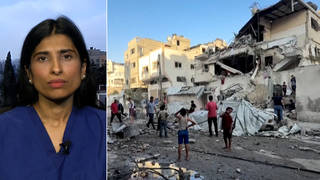
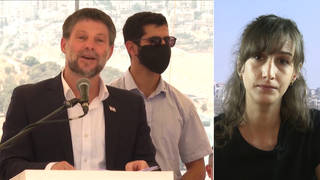
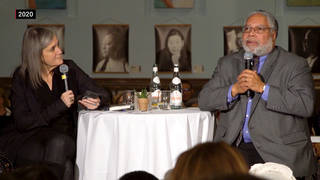
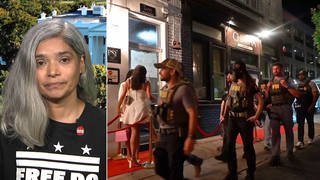

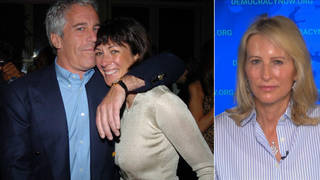
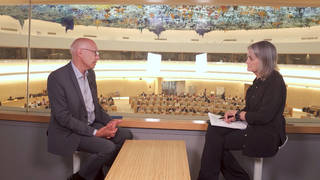
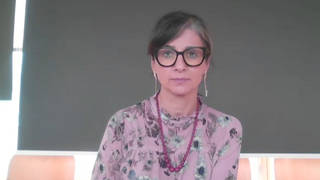

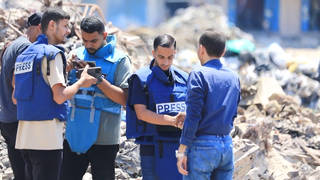
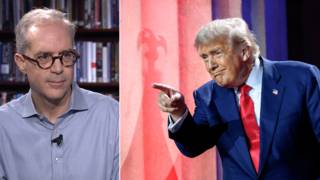
Media Options